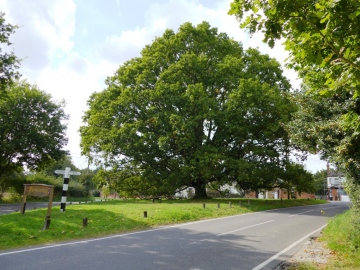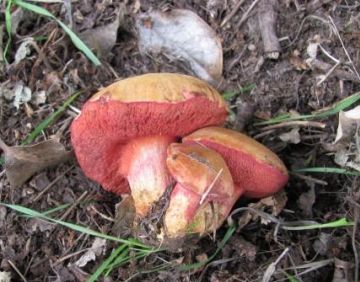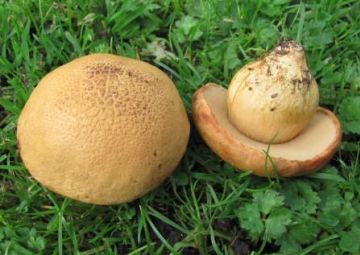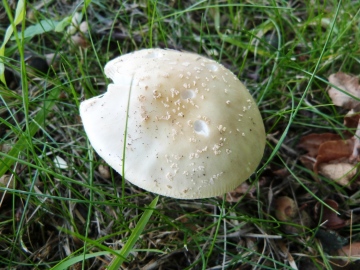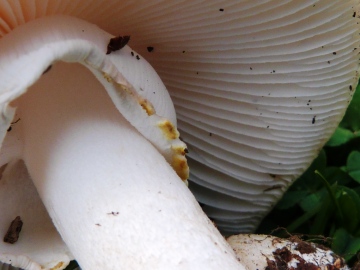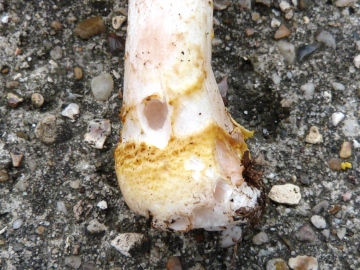The fine oak tree pictured here, which dominates the Green, is younger than it looks. It was in fact planted in 1936 to commemorate the coronation of King Edward V111, so is just under eighty years old. The late Charlie Cox, who was a boy at the time, told me that there was a bit of a fuss as it was not an English bred oak but imported from abroad, where I'm not sure, possibly Spain. It is certainly a little unusual as the branches sweep down - almost touching the ground in places - before curving skywards towards the tip and they form a deeply shaded canopy that covers a good two thirds of the green. It is a magnificent specimen for what in terms of oak longevity is a mere adolescent. It has a long way to catch up with the oldest oak in the parish - in the grounds of nearby Fryerning Hall - the canopy of which can just be seen above the signpost in the photograph. Legend has it that it was mentioned in the Domesday Book but Mark Hanson measured it at 26` round the trunk, which suggests an infancy dating back to Elizabethan times, so it is a venerable tree nonetheless.
Edward V111's oak shelters a remarkable collection of fungi. During the past ten years I have recorded around 25 species there, including two, Chalciporus (Rubinoletus) rubinus and Boletus moravicus, which are described by Geoffrey Kibby as rare species that inhabit warm southern locations under oak.
Fryerning Green - situated at the top of a hill on the Bagshot Sands - is anything but warm on a February morning when an east wind is blowing but perhaps the down-swept branches create their own micro-climate. More like Spain! In August another unusual species turned up, Amanita franchettii, one that is a little less rare but according to the BMS database had not been recorded in Essex before. Or so I thought. It now appears that Tony Boniface has gazumped me!
He found it at Hockley during a EFC foray a few years ago. The pale yellow cap with white veil fragments; and yellow warts on the edge of the annulus and the bulbous base of the stem make this an easy species to identify. I'm not sure whether it is poisonous but it would be a brave, or foolhardy gourmet who ate anything in this Genus. As Peter Marren put it - " all fungi are edible - once".........























